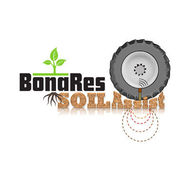Wheel Load and Wheel Pass Frequency as Indicators for Soil Compaction Risk: A Four-Year Analysis of Traffic Intensity at Field Scale (2020)
Augustin K., Kuhwald M., Brunotte J., Duttmann R.
Geosciences, 10 (8), 292
doi:10.3390/geosciences10080292
Abstract
Avoiding soil compaction is one of the objectives to ensure sustainable agriculture. Subsoil compaction in particular can be irreversible. Frequent passages by (increasingly heavy) agricultural machinery are one trigger for compaction. The aim of this work is to map and analyze the extent of traffic intensity over four years. The analysis is made for complete seasons and individual operations. The traffic intensity is distinguished into areas with more than five wheel passes, more than 5 Mg and 3 Mg wheel load. From 2014 to 2018, 63 work processes on a field were recorded and the wheel load and wheel passes were modeled spatially with FiTraM. Between 82% (winter wheat) and 100% (sugar beet) of the total infield area is trafficked during a season. The sugar beet season has the highest intensities. High intensities of more than five wheel passes and more than 5 Mg wheel load occur mainly during harvests in the headland. At wheel load ≥3 Mg, soil tillage also stresses the headland. In summary, no work process stays below one of the upper thresholds set. Based on the results, the importance of a soil-conserving management becomes obvious in order to secure the soil for agriculture in a sustainable way.